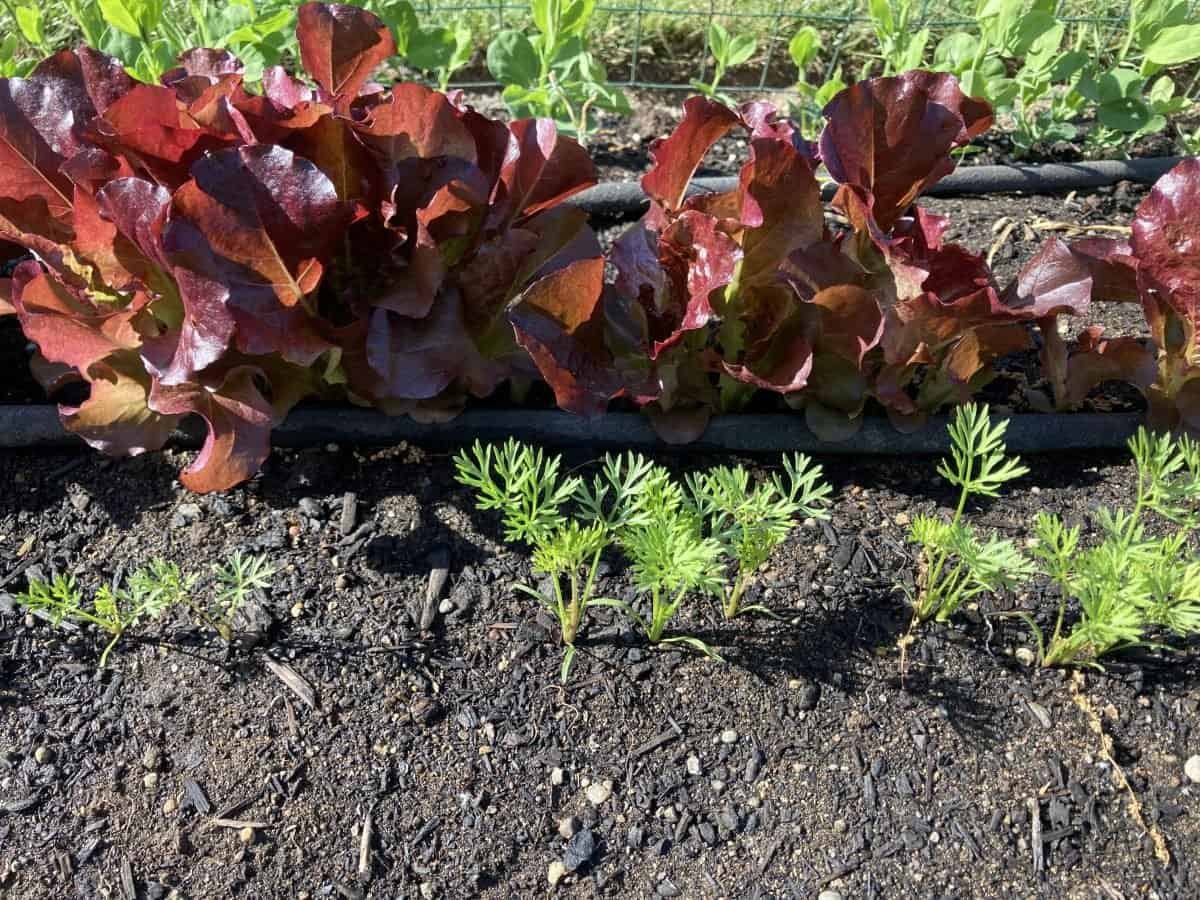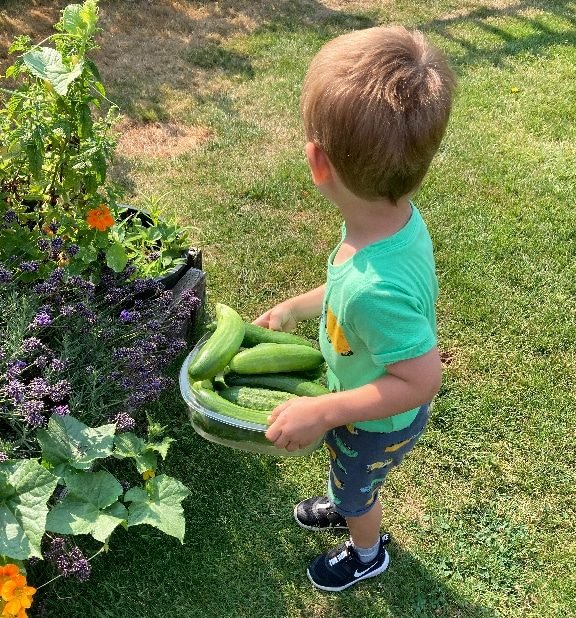How Much Sun Do Vegetables Need: A Succinct Guide to Effective Gardening
Growing vegetables in my garden has been a fulfilling experience, but knowing the right amount of sunlight required for each plant is crucial for their growth and success. As a gardener, I have discovered that different vegetables need varying amounts of sunlight, and understanding these needs can make all the difference in the quality of produce grown.
In my experience, I’ve learned that most vegetables typically need at least six hours of direct sunlight per day to grow successfully. However, there are some exceptions, such as leafy greens and root vegetables, which can tolerate partial shade. Paying attention to the specific sunlight needs of each vegetable type is essential, as it can significantly impact their overall health, yield, and flavor.
I have noticed that there are several factors to consider when determining the optimal sunlight exposure for vegetables in a garden. These factors include geographic location, climate, and seasonal changes, all of which can influence how much sunlight is available during various times of the year.
By taking these factors into account and adjusting my planting strategies accordingly, I can ensure that my vegetables receive the necessary sunlight to grow successfully.

The Importance of Sunlight for Vegetable Growth
In my gardening experience, I’ve found that sunlight plays a crucial role in the successful growth of vegetables. Most vegetables require a good amount of sunlight to thrive, as it provides them with the energy needed for photosynthesis.
As a general rule, I’ve observed that vegetables need at least 6 to 8 hours of direct sunlight per day. Some plants, like tomatoes, peppers, and squash, are particularly sun-loving and may need even more. On the other hand, certain leafy greens such as lettuce and spinach can prosper in slightly shadier conditions.
To ensure my vegetable garden receives adequate sunlight, I consider the following factors:
- Location: Choose a planting spot that gets the most sun, avoiding areas with tall trees or large buildings that cast shade.
- Plant placement: Space my plants strategically, so taller vegetables do not block sunlight from reaching shorter plants.
- Time of year: Pay attention to the changing angle of the sun throughout the seasons and adjust my planting accordingly.
Adjusting these factors to meet the specific sunlight requirements of my vegetable plants has led to a healthier, more productive garden. Remember, providing enough sunlight is essential for maximizing growth and yield in my vegetable garden.
Factors Affecting Sunlight Requirements
In my experience growing vegetables, I have found that there are several factors affecting the sunlight requirements of different plants. In this section, I will discuss the main factors, including the type of vegetable, growing season, and microclimate.
Type of Vegetable
Firstly, the type of vegetable plays a huge role in determining its sun requirements. Vegetables are typically divided into three categories based on their sunlight needs:
- Full sun: Most vegetables require at least 6 to 8 hours of direct sunlight per day. Examples include tomatoes, peppers, and squash.
- Partial shade: Some vegetables can tolerate less sunlight, requiring only 4 to 6 hours of direct sun per day. Examples are lettuce, spinach, and carrots.
- Shade tolerant: A few vegetables, such as kale and collards, can grow in as little as 2 to 4 hours of sunlight per day.
Growing Season
Secondly, the growing season also affects the sunlight requirements of vegetables. During the warmer months, the sun’s intensity is stronger, and the days are longer. I’ve noticed that, in these conditions, vegetables may require less sunlight to produce a successful yield. Conversely, in cooler months with shorter days, vegetables may need more sunlight to grow properly.
Microclimate
Lastly, the microclimate of the specific growing area greatly impacts how much sunlight vegetables need. In my garden, I have observed that sunlight exposure can vary significantly even within small areas due to factors such as terrain, proximity to buildings, and plant spacing.
To ensure the success of my vegetables, I often have to monitor their exposure to sunlight and make adjustments, such as moving them to a sunnier spot or providing temporary shade during the hottest parts of the day.
General Sunlight Requirements for Common Vegetables
In my experience, understanding the sunlight requirements of vegetables is essential for a thriving garden. The amount of sun exposure greatly affects the growth and yield of your vegetables. Let me share the general sunlight requirements for some common vegetables and their categories based on their sun preferences.
Full Sun Vegetables
I’ve found that many vegetables prefer full sunlight, which means they require at least 6-8 hours of direct sun daily. These include:
- Tomatoes
- Peppers
- Beans
- Summer Squash
- Eggplants
- Cucumbers
- Corn
Providing these vegetables with adequate sunlight allows them to produce a high yield and encourages healthy growth throughout the season.
Partial Sun Vegetables
Some vegetables thrive with a bit less sun, typically requiring around 4-6 hours of direct sunlight daily. Vegetables in this category include:
- Lettuce
- Kale
- Spinach
- Broccoli
- Brussels Sprouts
- Cabbage
These partial sun vegetables can tolerate dappled or filtered sunlight, making them ideal for planting in areas with limited direct sun exposure.
It’s crucial to consider both the sunlight requirements of your vegetables and the sun exposure in your garden space. By doing so, you’ll be one step closer to achieving a bountiful harvest.
Ways to Optimize Sun Exposure
As a gardener, I understand the importance of providing optimal sunlight to help vegetables grow successfully. Here are some methods I use to ensure vegetables receive the adequate sun exposure they require:
Proper Garden Planning
Before planting any vegetables, I make sure to properly plan my garden layout. This can impact the amount of sunlight each plant receives.
- Choose a site that receives at least 6-8 hours of direct sunlight per day, as most vegetables need this amount of sun exposure to grow well.
- Take the time to study the sun’s path to better understand which areas receive the most sunlight throughout the day.
- Place taller plants on the north side of the garden and shorter plants on the south side to prevent shading and maximize sunlight exposure for all plants.
Use of Reflective Surfaces
Utilizing reflective surfaces can be an effective way to increase the amount of sunlight reaching plants, especially in smaller gardens or areas with limited sun exposure. Here’s how I incorporate reflective surfaces in my garden:
- Place white or reflective mulch between rows of vegetables to reflect sunlight back up onto the plants.
- Position mirrors or reflective panels on the north or shadier side of the garden, which can help reflect additional sunlight onto the plants.
Vertical Gardening
Vertical gardening is another practical solution I’ve used to optimize sunlight exposure for vegetables. This method helps make better use of available space and can provide more direct sunlight exposure to each plant:
- Incorporate trellises, planters, or other vertical supports, which can help to ensure the plants receive plenty of sunlight on all sides as they grow upward.
- By utilizing vertical space, I’m able to increase the overall amount of sun exposure available for my vegetables, even in more compact garden spaces.
Implementing these strategies has proven helpful for me when trying to optimize sun exposure for my thriving vegetable garden.
Identifying and Addressing Sunlight Challenges
When growing vegetables, I’ve found that providing the right amount of sunlight is crucial for their successful growth. In order to ensure our vegetables thrive, it’s important to address both insufficient and excessive sunlight issues. In this section, two sub-sections will cover recognizing symptoms of insufficient sunlight and strategies for dealing with excessive sunlight.
Recognizing Symptoms of Insufficient Sunlight
As a gardener, I pay close attention to the signs that my vegetables are not getting enough sunlight. Some common symptoms of insufficient sunlight include:
- Yellowing leaves
- Weak and spindly growth
- Slowed or stunted growth
- Poor fruit production
To confirm whether my plants are experiencing insufficient sunlight, I check their recommended daily sun exposure and compare it with the actual sunlight they’re receiving. Once I’ve determined that the cause is insufficient sunlight, I take steps to address it.
Dealing with Excessive Sunlight
On the other hand, too much sunlight can also be a problem for my vegetables. Over-exposure to sunlight can result in various issues, such as:
- Wilting, despite adequate watering
- Brown or burnt leaf edges and tips
- Blanched or faded leaf colors
- Reduced fruit production
To tackle excessive sunlight issues, I ensure my vegetables receive a proper balance of sun and shade. I often provide them with some form of shade, such as shade cloth or taller companion plants, especially during the hottest part of the day. Monitoring my vegetables and adjusting their sun exposure as needed has proven to be an effective approach for dealing with sunlight challenges.
It is also important to use mulch around your vegetables to shade the roots and help the plants retain moisture where it belongs.
Conclusion
In summary, vegetables require different amounts of sunlight depending on their specific needs. As a general rule, I’ve noticed that most vegetables need at least 6 hours of direct sunlight per day to grow successfully. However, certain plants, like leafy greens and root vegetables, can tolerate partial shade and may actually benefit from lower light levels.
When planning my garden, I pay close attention to the sun’s path and consider the shading effect of nearby structures and trees. By placing my sun-loving vegetables in the sunniest spots and the shade-tolerant ones in areas with some protection, I ensure that all of my plants get the light they need to grow and produce tasty, healthy crops.
Here are a few points to keep in mind while managing sunlight for my vegetable garden:
- Monitor the sunlight in my garden throughout the day and season.
- Group vegetables with similar sunlight requirements together.
- Rotate my crops each season to avoid soil nutrient depletion and pest build-up.
- Use vertical growing techniques, like trellises, to maximize sunlight exposure for climbing plants.
By following these guidelines and adjusting them to my local conditions, I can ensure that my vegetable garden has the right amount of sunlight to thrive and produce a bountiful harvest.




